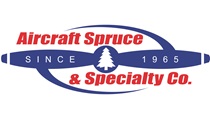
Savvy Maintenance
Opinion: Behind the curtain
Discussing innovation and safety at GA Engine Summit
In September 2017, I was invited to participate in a two-day GA Engine Summit in Burlington, Massachusetts. The meeting was a long-awaited sequel to the first GA Engine Summit that took place in 2015, and was designed to keep communication lines open between the FAA and the general aviation industry. This year’s summit was hosted by the FAA’s Aircraft Certification Service, and attended by representatives from across the piston GA industry. The FAA discussed the agency’s role in facilitating innovation in powerplants and fuels, accident data, and the FAA’s process for issuing airworthiness directives (ADs), among other topics.

Electric propulsion revolution
Electric propulsion is advancing quickly and feels like a revolution, according to Gary Horan of the FAA’s Policy and Innovation Division. Both pure electric propulsion and hybrid electric propulsion are becoming viable for short-range small manned aircraft, he said. Of course, electric propulsion is already the dominant choice for small drones.
The FAA sees small and novel electrically propelled aircraft as becoming big players before the end of the decade. Following shortly thereafter, in the early 2020s, the FAA expects the introduction of hybrid electric propulsion in aircraft weighing up to 19,000 pounds. (Hybrid propulsion systems combine a conventional reciprocating or turbine engine with electric motors and batteries.)
Horan said industry applicants have been approaching the FAA for guidance on how to approach certification, and electric propulsion is at the threshold of becoming a major player in the world of certificated aircraft. Driving this revolution is the advancement of improved battery and electric motor technology.
The FAA’s goal is to facilitate the development of industry-based consensus standard for approval of electric and hybrid/electric propulsion systems, working through ASTM International subcommittee F39.05. This committee consists of 16 people, including five from the FAA. Clearly the FAA is taking a proactive role in helping to guide this process. The first goal of the committee is to develop a consensus standard for a simple base electric motor system and means for compliance for small GA aircraft, something that should be completed soon. Next, the consensus standard will be extended to cover hybrid/electric systems for Part 23 aircraft. Finally, it will be extended to commuter and Part 25 (air carrier) aircraft.
Alternative fuels
Peter White, manager of the FAA’s Alternative Fuels Program, gave an update on the Piston Aviation Fuel Initiative (PAFI)—the government/industry partnership to find an unleaded aviation fuel that can be readily available across the GA fleet. The current 100LL avgas is considered at risk from Environmental Protection Agency regulation, pressure from state and local governments, lawsuits from environmental groups, and from the fact that there is only one remaining supplier of tetraethyl lead worldwide. It’s not clear precisely when 100LL is going away. It appears safe for the next few years, but the handwriting is on the wall. About 167,000 GA aircraft depend on 100LL.
In June 2013, the FAA requested that fuel producers submit their replacement fuel proposals to the FAA for evaluation. By July 2014, the agency received 17 formulations from six companies and assessed candidate fuels in terms of their impact on the existing fleet, the production and distribution infrastructure, the impact on the environment, toxicology, and the cost of aircraft operations. In September 2014, the FAA accepted four fuel formulations into the PAFI Phase 1 test program.
Phase 1 testing took place at the FAA’s William J. Hughes Technical Center in Atlantic City, New Jersey, using six test rigs to test cold and hot fuel performance and compatibility with various common fuel system materials. Limited engine testing was also performed, evaluating power, performance, antidetonation properties, and engine start. Each candidate fuel was also evaluated for cost, producibility, storage stability, and environmental risk. By early 2016, Phase 1 testing was complete and two candidate fuels were selected for Phase 2 testing: Shell UL100 and Swift UL102.
Phase 2 testing of these fuels is well under way, and scheduled to be completed in early 2018. Phase 2 includes both engine testing and aircraft testing. The engine tests involve performance testing of 20 engines of 15 different models, ranging from carbureted four-cylinder engines to turbocharged, fuel-injected six-cylinder engines, plus some radials. Six of the engines have been subjected to detonation testing with each UL fuel and with mixtures of these fuels with 100LL (to evaluate phased deployment). Four of the engines went through 400-hour block tests using each UL fuel, for a total of 3,200 hours. The aircraft tests involve 10 aircraft models ranging from two-place light trainers to high-performance twins and helicopters.
Getting these unleaded fuels approved presents a unique regulatory challenge. That’s because the FAA doesn’t certify fuels; it certifies engines and aircraft to operate on specified fuels. But in this case, getting the UL fuels approved on a model-by-model basis for each engine and aircraft is impractical. To get these new fuels approved on a fleet-wide basis, the FAA will require new statutory authorization. The FAA and industry are working with Congress to achieve this. Stay tuned.
ADs and AMOCs
Much time was spent on a subject near and dear to every aircraft owner’s heart: airworthiness directives. The Aircraft Certification Service is responsible for continued operational safety. The division gathers data on potential unsafe conditions, performs a numerical risk analysis to assess the frequency and severity of the problem, collects candidate corrective actions, convenes a formal corrective action review board to decide what action is appropriate, and then drafts the selected corrective action (AD, special airworthiness information bulletin, et cetera). In the case of an AD, the FAA then issues a notice of proposed rulemaking and addresses public comments, then issues a final rule.
This process has worked well for air carriers, but not as well for GA. In the world of GA, event reporting is far less complete and accurate, making numerical risk analysis more difficult. GA operators are much more cost-sensitive, so the risk-versus-cost evaluation can be challenging. The FAA has historically had good communications with the aircraft and engine manufacturers, but less so with the people most affected: aircraft owners and operators. Unlike the airlines, few GA operators have engineering staffs or individualized maintenance programs, so most of us are reliant on recommendations from the aircraft and engine manufacturers, whose best interests are often different from ours.
In order to help the FAA gather needed data for GA aircraft, and to help give GA owners/operators a voice in the continued operational safety process, in 2001 we worked with the Small Airplane Directorate to create a new airworthiness concern sheet (ACS) process. The ACS was designed to provide an early heads-up to AOPA, EAA, and relevant GA type associations whenever the FAA identified a potential unsafe condition. The ACS solicited event data from these groups, and gave them an opportunity to weigh in on the FAA’s concerns before formal rulemaking action kicked in. Originally, the ACS process was limited to the Small Airplane Directorate, but in 2015 the Engine and Propeller Directorate also agreed to use the ACS process when it was considering an AD that would affect GA.
In the past year, the ACS process was extremely helpful in allowing GA to weigh in on a threatened AD on Continental 520/550 camshaft gears that would have been extremely costly to tens of thousands of GA owners (see “Savvy Maintenance: Crisis Averted,” October 2017 AOPA Pilot). Unfortunately, the FAA decided not to issue an ACS before issuing the recent AD against Lycoming connecting rod bushings and denied GA owner representatives any meaningful input into the continued operational safety process. At the meeting, several of us were vocal in expressing our extreme displeasure at how the Lycoming AD was handled, and asked that the FAA try not to let this kind of thing happen in the future.
We also discussed AMOCs: alternative methods of compliance with ADs. If an operator doesn’t like the corrective action mandated by an AD and thinks there’s a better way to address the unsafe condition, the operator can propose an AMOC, and the FAA will approve it if the operator can show that the proposed AMOC achieves a level of safety acceptable to the FAA. The airlines use this approach all the time, but GA doesn’t use it much, mostly because few GA operators have the engineering capability to create an acceptable AMOC proposal. At the 2015 Engine Summit, the FAA urged the various GA alphabet groups who attended to make better use of the AMOC mechanism.
In 2016, the FAA issued a draconian AD against ECi cylinders on Continental engines. AOPA, in partnership with several affected type associations, prepared a proposed AMOC to allow the condemned ECi cylinders to remain in service to TBO under certain controlled conditions. The FAA rejected the AMOC proposal on the grounds that it had not provided sufficient data to prove that it would achieve an acceptable level of safety. This subject was discussed at length at the meeting. We complained that the FAA had acted unreasonably by requiring operators to “prove the unprovable.” The FAA said their intent was not to shoot down our AMOC but to invite further discussions. Of course, by now the subject is moot because virtually all the affected ECi cylinders have been removed from service. Representatives of the owners and the FAA agreed to try to do better next time.
All in all, the summit was a productive meeting. Everyone agreed we should try to have such meetings annually, and the next one is tentatively set for September 2018.
Mike Busch is an A&P/IA.
Email [email protected]



